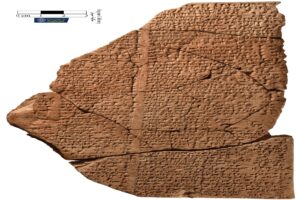In 1999, archaeologists found a 2,000-year-old grave on the Isles of Scilly, off the coast of the UK. For decades, they have questioned whether the remains inside it belonged to a man or a woman.
The body from the Iron Age was buried with a number of items. Two of them stood out: a sword and a mirror. This is where the confusion started. Swords were usually buried with male warriors, and mirrors with women. It is the only known Iron Age grave in Western Europe that contains both items.

The Isles of Scilly. Photo: Historic England Archive
A new study has confirmed that the skeleton belonged to a female warrior.
“Our findings…provide evidence of a leading role for a woman in warfare on Iron Age Scilly,” said biologist and co-author Sarah Stark.
New technique
DNA analysis of bone samples all failed, so the team used the teeth. Tooth enamel contains a protein, amelogenin, that varies with X and Y chromosomes. They only found the kind of amelogenin associated with the X chromosome, so this was a woman.
This method also determined that the “Ivory Man” in Spain was actually a woman.
This new technique will likely uncover more ancient women mistaken for men, and provide insights into the roles they had in their societies.

The Iron Age woman’s grave. Photo: Historic England Archive
The grave contained other objects besides the mirror and the sword. There was also a shield, a metal brooch, and a ring. While the shield and sword clearly go with warfare, mirrors had many uses during the Iron Age, including reflecting light for warriors to follow. Researchers believe they were also used in rituals to ask the supernatural for victory and for the safe return of warriors.
We know very little about the people who lived in Britain before the Romans. Archaeologists think that most warfare at the time consisted of surprise attacks and raids. Other remains in the area show that both men and women endured the violence of the time. The bones from both genders bear clear signs of trauma.

Detailing on the sword. Photo: Historic England Archive
A leader of some sort
What sets this grave apart was the elaborate burial befitting a leader, which challenges assumptions about the historical role of women.
“The combination of a sword and a mirror suggests this woman had high status within her community and may have played a commanding role in local warfare,” said Stark.






